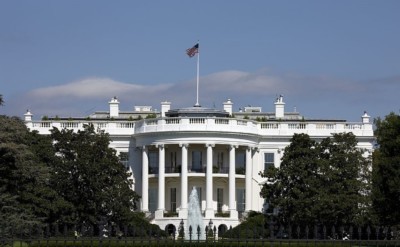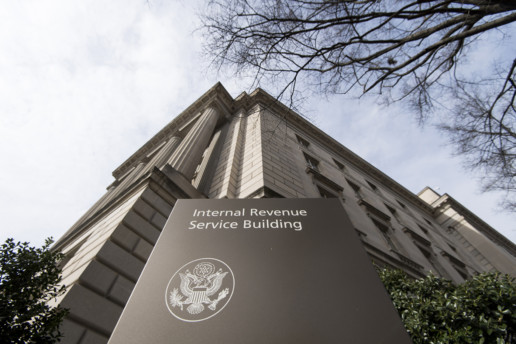Employers shouldn’t fear expansion of Medicare
A new survey from the National Business Group on Health found that only 23 percent of large employers believe Medicare eligibility should drop to age 50. Read this article from Employee Benefits Advisor to learn more about the potential expansion of Medicare.
Like a significant chunk of American voters, a majority of large employers want to expand Medicare. Just not too much.
A new survey of 147 large employers from the National Business Group on Health found that 55% of them support a Medicare expansion that’s limited to older Americans. Only 23% think eligibility should drop to age 50, however, and 45% don’t think it should expand at all. A majority believe that a broader “Medicare for All” plan would increase health costs.
The same survey also highlights why employers should consider coming around on health reform that reduces their role in the system. The growth in health costs has outpaced inflation and wage growth for years, and the surveyed businesses expect it to rise 5% to $15,375 for each employee next year.
About 70% of those costs will fall on the companies, which plan to try everything from boosting virtual health services to investing in health concierges to rein them in, according to the survey.
History suggests that their best efforts might not amount to much.
Employer-sponsored insurance is America’s single largest source of health coverage. That’s mostly true because the IRS exempted employer health benefits from taxes in 1943, a move that created the federal government’s single biggest tax expenditure. Large companies derive some benefit from the current system because they can provide a significant tax-free benefit that helps them compete for talent and pay people less. But it comes with significant drawbacks. Employers have to devote substantial resources to providing healthcare and controlling costs. Many of them have no particular expertise or advantage in doing so.
The results are mixed. Yes, individuals with private insurance are generally satisfied with the quality of their coverage. They’re not nearly as happy about the cost as deductibles rise. The U.S. pays more than any other developed country for healthcare and medicines and receives worse results on a variety of metrics.
Employers pay particularly high prices and spend heavily on plans that have higher overhead than public alternatives. A recent RAND study found that employer-sponsored plans paid hospitals at 241% of Medicare rates in 2017. Employers are already effectively subsidizing public programs, not to mention the profitability of insurers, health care providers and drugmakers.
It’s not entirely their fault. The American system inherently fragments negotiating power, which gives providers a significant advantage and makes it difficult for even the largest employers to get a good deal. Turning a larger piece of healthcare over to the government would free companies to focus more time and resources on their actual business instead of on navigating the world’s most expensive and convoluted healthcare market.
Big businesses most likely fear big Medicare expansion in large part because it would lead to a significant tax increase. But looking at any tax increase as an enemy is a mistake. Those taxes represent a trade-off; they would replace some or all of the billions of dollars that employers are currently spending on care. Depending on what taxes are imposed and whether the public plan is able to control costs better than the current system — and it could hardly do worse — many employers could come out ahead.
There are a lot of unknowns when it comes to Medicare for All and plans that move the country in that direction. Employers are right to be skeptical until they know more, but the results could well shake out in their favor, and they shouldn’t be so quick to discount the approach.
SOURCE: Nisen, M. (15 August 2019)"Employers shouldn’t fear expansion of Medicare" (Web Blog Post). Retrieved from https://www.employeebenefitadviser.com/articles/employers-shouldnt-fear-expansion-of-medicare
Cadillac Tax May Finally Be Running Out of Gas
The Cadillac tax - a 40 percent tax on the most generous employer-provided health insurance plans - may be about to change. The Cadillac tax was supposed to take effect in 2018 but has been delayed twice and recently, the House voted to repeal this tax entirely. Read this blog post to learn more about this potential change.
The politics of healthcare are changing. And one of the most controversial parts of the Affordable Care Act — the so-called Cadillac tax — may be about to change with it.
The Cadillac tax is a 40% tax on the most generous employer-provided health insurance plans — those that cost more than $11,200 for an individual policy or $30,150 for family coverage. It was supposed to take effect in 2018, but Congress has delayed it twice. And the House recently voted overwhelmingly — 419-6 — to repeal it entirely. A Senate companion bill has 61 co-sponsors — more than enough to ensure passage.
The tax was always an unpopular and controversial part of the 2010 health law because the expectation was that employers would cut benefits to avoid paying the tax. But ACA backers said it was necessary to help pay for the law’s nearly $1 trillion cost and help stem the use of what was seen as potentially unnecessary care. In the ensuing years, however, public opinion has shifted decisively, as premiums and out-of-pocket costs have soared. Now the biggest health issue is not how much the nation is spending on healthcare, but how much individuals are.
“Voters deeply care about healthcare still,” said Heather Meade, a spokeswoman for the Alliance to Fight the 40, a coalition of business, labor and patient advocacy groups urging repeal of the Cadillac tax. “But it is about their own personal cost and their ability to afford healthcare.”
Stan Dorn, a senior fellow at Families USA, recently wrote in the journal Health Affairs that the backers of the ACA thought the tax was necessary to sell the law to people concerned about its price tag and to cut back on overly generous benefits that could drive up health costs. But transitions in healthcare, such as the increasing use of high-deductible plans, make that argument less compelling, he said.
“Nowadays, few observers would argue that [employer-sponsored insurance] gives most workers and their families’ excessive coverage,” he wrote.
The possibility of the tax has been “casting a statutory shadow over 180 million Americans’ health plans, which we know, from HR administrators and employee reps in real life, has added pressure to shift coverage into higher-deductible plans, which falls on the backs of working Americans,” said Rep. Joe Courtney (D-Conn.).
Support or opposition to the Cadillac tax has never broken down cleanly along party lines. For example, economists from across the ideological spectrum supported its inclusion in the ACA, and many continue to endorse it.
“If people have insurance that pays for too much, they don’t have enough skin in the game. They may be too quick to seek professional medical care. They may too easily accede when physicians recommend superfluous tests and treatments,” wrote N. Gregory Mankiw, an economics adviser in the George W. Bush administration, and Lawrence Summers, an economic aide to President Barack Obama, in a 2015 column. “Such behavior can drive national health spending beyond what is necessary and desirable.”
At the same time, however, the tax has been bitterly opposed by organized labor, a key constituency for Democrats. “Many unions have been unable to bargain for higher wages, but they have been taking more generous health benefits instead for years,” said Robert Blendon, a professor at the Harvard T.H. Chan School of Public Health who studies health and public opinion.
Now, unions say, those benefits are disappearing, with premiums, deductibles and other cost sharing rising as employers scramble to stay under the threshold for the impending tax. “Employers are using the tax as justification to shift more costs to employees, raising costs for workers and their families,” said a letter to members of Congress from the Service Employees International Union.
Deductibles have been rising for a number of reasons, the possibility of the tax among them. According to a 2018 survey by the federal government’s National Center for Health Statistics, nearly half of Americans under age 65 (47%) had high-deductible health plans. Those are plans that have deductibles of at least $1,350 for individual coverage or $2,700 for family coverage.
It’s not yet clear if the Senate will take up the House-passed bill, or one like it.
The senators leading the charge in that chamber — Mike Rounds (R-S.D.) and Martin Heinrich (D-N.M.) — have already written to Senate Majority Leader Mitch McConnell to urge him to bring the bill to the floor following the House’s overwhelming vote.
“At a time when healthcare expenses continue to go up, and Congress remains divided on many issues, the repeal of the Cadillac tax is something that has true bipartisan support,” the letter said.
Still, there is opposition. A letter to the Senate on July 29 from economists and other health experts argued that the tax “will help curtail the growth of private health insurance premiums by encouraging employers to limit the costs of plans to the tax-free amount.” The letter also pointed out that repealing the tax “would add directly to the federal budget deficit, an estimated $197 billion over the next decade, according to the Joint Committee on Taxation.”
Still, if McConnell does bring the bill up, there is little doubt it would pass, despite support for the tax from economists and budget watchdogs.
“When employers and employees agree in lockstep that they hate it, there are not enough economists out there to outvote them,” said former Senate GOP aide Rodney Whitlock, now a healthcare consultant.
Harvard professor Blendon agrees. “Voters are saying, ‘We want you to lower our health costs,’” he said. The Cadillac tax, at least for those affected by it, would do the opposite.
SOURCE: Rovner, J. ( 19 August, 2019) "Cadillac tax may finally be running out of gas" (Web Blog Post). Retrieved from https://www.employeebenefitadviser.com/articles/obamacare-excise-tax-may-be-at-an-end
PCORI Fee Is Due by July 31 for Self-Insured Health Plans
The annual fee for the federal Patient-Centered Outcomes Research Institute (PCORI) is due July 31, 2019. Plans with terms ending after September 30, 2012, and before October 1, 2019, are required to pay an annual PCORI fee. Read this article from SHRM to learn more.
An earlier version of this article was posted on November 6, 2018
The next annual fee that sponsors of self-insured health plans must pay to fund the federal Patient-Centered Outcomes Research Institute (PCORI) is due July 31, 2019.
The Affordable Care Act mandated payment of an annual PCORI fee by plans with terms ending after Sept. 30, 2012, and before Oct. 1, 2019, to provide initial funding for the Washington, D.C.-based institute, which funds research on the comparative effectiveness of medical treatments. Self-insured plans pay the fee themselves, while insurance companies pay the fee for fully insured plans but may pass the cost along to employers through higher premiums.
The IRS treats the fee like an excise tax.
The PCORI fee is due by the July 31 following the last day of the plan year. The final PCORI payment for sponsors of 2018 calendar-year plans is due by July 31, 2019. The final PCORI fee for plan years ending from Jan. 1, 2019 to Sept. 30, 2019, will be due by July 31, 2020.
In Notice 2018-85, the IRS set the amount used to calculate the PCORI fee at $2.45 per person covered by plan years ending Oct. 1, 2018, through Sept. 30, 2019.
The chart below shows the fees to be paid in 2019, which are slightly higher than the fees owed in 2018. The per-enrollee amount depends on when the plan year ended, as in previous years.
| Fee per Plan Enrollee for Payment Due July 31, 2019 |
|
| Plan years ending from Oct. 1, 2018, through Sept. 30, 2019. | $2.45 |
| Fee per Plan Enrollee for Payment Due July 31, 2018 |
|
| Plan years ending from Oct. 1, 2017, through Dec. 31, 2017, including calendar-year plans. | $2.39 |
| Plan years ending from Jan. 1, 2017, through Sept. 30, 2017 | $2.26 |
| Source: IRS. |
Nearing the End
The PCORI fee will not be assessed for plan years ending after Sept. 30, 2019, "which means that for a calendar-year plan, the last year for assessment is the 2018 calendar year," wrote Richard Stover, a New York City-based principal at HR consultancy Buck Global, and Amy Dunn, a principal in Buck's Knowledge Resource Center.
For noncalendar-year plans that end between Jan. 1, 2019 and Sept. 30, 3019, however, there will be one last PCORI payment due by July 31, 2020.
"There will not be any PCORI fee for plan years that end on October 1, 2019 or later," according to 360 Corporate Benefit Advisors.
The PCORI fee was first assessed for plan years ending after Sept. 30, 2012. The fee for the first plan year was $1 per plan enrollee, which increased to $2 per enrollee in the second year and was then indexed in subsequent years based on the increase in national health expenditures.
FSAs and HRAs
In addition to self-insured medical plans, health flexible spending accounts (health FSAs) and health reimbursement arrangements (HRAs) that fail to qualify as “excepted benefits” would be required to pay the per-enrollee fee, wrote Gary Kushner, president and CEO of Kushner & Co., a benefits advisory firm based in Portage, Mich.
As set forth in the Department of Labor's Technical Release 2013-03:
- A health FSA is an excepted benefit if the employer does not contribute more than $500 a year to any employee accounts and also offers a group health plan with nonexcepted benefits.
- An HRA is an excepted benefit if it only reimburses for limited-scope dental and vision expenses or long-term care coverage and is not integrated with a group health plan.
Kushner explained that:
- If the employer sponsors a fully insured group health plan for which the insurance carrier is filing and paying the PCORI fee and the same employer sponsors an employer-funded health care FSA or an HRA not exempted from the fee, employers should only count the employees participating in the FSA or HRA, and not spouses or dependents, when paying the fee.
- If the employer sponsors a self-funded group health plan, then the employer needs to file the form and pay the PCORI fee only on the number of individuals enrolled in the group health plan, and not in the employer-funded health care FSA or HRA.
An employer that sponsors a self-insured HRA along with a fully insured medical plan "must pay PCORI fees based on the number of employees (dependents are not included in this count) participating in the HRA, while the insurer pays the PCORI fee on the individuals (including dependents) covered under the insured plan," wrote Mark Holloway, senior vice president and director of compliance services at Lockton Companies, a benefits broker and services firm based in Kansas City, Mo. Where an employer maintains an HRA along with a self-funded medical plan and both have the same plan year, "the employer pays a single PCORI fee based on the number of covered lives in the self-funded medical plan (the HRA is disregarded)."
Paying PCORI Fees
Self-insured employers are responsible for submitting the fee and accompanying paperwork to the IRS, as "third-party reporting and payment of the fee is not permitted for self-funded plans," Holloway noted.
For the coming year, self-insured health plan sponsors should use Form 720 for the second calendar quarter to report and pay the PCORI fee by July 31, 2019.
"On p. 2 of Form 720, under Part II, the employer needs to designate the average number of covered lives under its applicable self-insured plan," Holloway explained. The number of covered lives will be multiplied by $2.45 for plan years ending on or after Oct. 1, 2018, to determine the total fee owed to the IRS next July.
To calculate "the average number of lives covered" or plan enrollees, employers should use one of three methods listed on pages 8 and 9 of the Instructions for Form 720. A white paper by Keller Benefit Services describes these methods in greater detail.
Although the fee is paid annually, employers should indicate on the Payment Voucher (720-V), located at the end of Form 720, that the tax period for the fee is the second quarter of the year. "Failure to properly designate 'second quarter' on the voucher will result in the IRS's software generating a tardy filing notice, with all the incumbent aggravation on the employer to correct the matter with the IRS," Holloway warned.
A few other points to keep in mind: "The U.S. Department of Labor believes the fee cannot be paid from plan assets," he said. In other words, for self-insured health plans, "the PCORI fee must be paid by the plan sponsor. It is not a permissible expense of a self-funded plan and cannot be paid in whole or part by participant contributions."
In addition, PCORI fees "should not be included in the plan's cost when computing the plan's COBRA premium," Holloway noted. But "the IRS has indicated the fee is, however, a tax-deductible business expense for employers with self-funded plans," he added, citing a May 2013 IRS memorandum.
SOURCE: Miller, S. (2 July 2019) "PCORI Fee Is Due by July 31 for Self-Insured Health Plans" (Web Blog Post). Retrieved from https://www.shrm.org/resourcesandtools/hr-topics/benefits/pages/2019-pcori-fees.aspx
Federal Appeals Court Takes Up Case That Could Upend U.S. Health System
A federal appeals court in New Orleans has taken up a case against the Affordable Care Act. If the lower court's ruling in the case, Texas v. United States, is upheld, it has the potential to shake the nation's health care system. Read this article to learn more about this case.
The fate of the Affordable Care Act is again on the line Tuesday, as a federal appeals court in New Orleans takes up a case in which a lower court judge has already ruled the massive health law unconstitutional.
If the lower court ruling is ultimately upheld, the case, Texas v. United States, has the potential to shake the nation’s entire health care system to its core. Not only would such a decision immediately affect the estimated 20 million people who get their health coverage through programs created under the law, ending the ACA would also create chaos in other parts of the health care system that were directly or indirectly changed under the law’s multitude of provisions, such as calorie counts on menus, a pathway for approval of generic copies of expensive biologic drugs and, perhaps most important politically, protections for people with preexisting conditions.
“Billions of dollars of private and public investment — impacting every corner of the American health system — have been made based on the existence of the ACA,” said a friend-of-the-court brief filed by a bipartisan group of economists and other health policy experts to the 5th Circuit Court of Appeals. Upholding the lower court’s ruling, the scholars added, “would upend all of those settled expectations and throw healthcare markets, and 1/5 of the economy, into chaos.”
Here are five important things to know about the case:
It was prompted by the tax bill Republicans passed in 2017.
The big tax cut bill passed by the GOP Congress in December 2017 eliminated the penalty included in the ACA for failure to maintain health insurance coverage. The lawsuit was filed in February 2018 by a group of Republican attorneys general and two governors. They argued that since the Supreme Court had upheld the ACA in 2012 specifically because it was a valid exercise of Congress’ taxing power, taking the tax away makes the entire rest of the law unconstitutional.
Last December, Judge Reed C. O’Connor agreed with the Republicans. “In some ways the question before the court involves the intent of both the 2010 and 2017 Congresses,” O’Connor wrote in his decision. “The former enacted the ACA. The latter sawed off the last leg it stood on.”
State and federal Democrats are defending the law.
Arguing that the rest of the law remains valid is a group of Democratic attorneys general, led by California’s Xavier Becerra.
“Our argument is simple,” said Becerra in a statement last Friday. “The health and wellbeing of nearly every American is at risk. Healthcare can mean the difference between life and death, financial stability and bankruptcy. Our families’ wellbeing should not be treated as a political football.”
The Democratic-led House of Representatives has also been granted “intervenor” status in the case.
The Trump administration has taken several positions on the lawsuit.
The defendant in the case is technically the Trump administration. Traditionally, an administration, even one that did not work to pass the law in question, defends existing law in court.
Not this time. And it is still unclear exactly what the administration’s position is on the lawsuit. “They have changed their position several times,” Sen. Chris Murphy (D-Conn.) told reporters on a conference call Monday.
When the administration first weighed in on the case, in June 2018, it said it believed that without the tax penalty only the provisions most closely connected to that penalty — including requiring insurers to sell policies to people with preexisting conditions — should be struck down. The rest of the law should stay, the Justice Department argued.
After O’Connor’s ruling, however, the administration changed its mind. In March, a spokeswoman for the Justice Department said it had “determined that the district court’s comprehensive opinion came to the correct conclusion and will support it on appeal.”
Now it appears the administration is shifting its opinion again. In a filing with the court late last week, Justice Department attorneys argued that perhaps the health law should be invalidated only in the GOP states that are suing, rather than all states. It is unclear how that would work.
Legal scholars — including those who oppose the ACA — consider the case dubious.
In a brief filed with the appeals court, legal scholars from both sides of the fight over the ACA agreed that the lawsuit’s underlying claim makes no sense.
In passing the tax bill that eliminated the ACA’s tax penalty but nothing else, Congress “made the judgment that it wanted the insurance reforms and the rest of the ACA to remain even in the absence of an enforceable insurance mandate,” wrote law professors Jonathan Adler, Nicholas Bagley, Abbe Gluck and Ilya Somin. Bagley and Gluck are supporters of the ACA; Adler and Somin have argued against it in earlier suits. “Congress itself — not a court — eliminated enforcement of the provision in question and left the rest of the statute standing. So congressional intent is clear.”
It could end up in front of the Supreme Court right in the middle of the 2020 election.
Depending on what happens at the appeals court level, the health law could be back in front of the Supreme Court — which has upheld the health law on other grounds in 2012 and 2015 — and land there in the middle of next year’s presidential campaign.
Democrats are already sharpening their rhetoric for that possibility.
“President Trump and Republicans are playing a very dangerous game with people’s lives,” Senate Minority Leader Chuck Schumer told reporters on a conference call Monday.
Murphy said he is most concerned that if the lower court ruling is upheld and the health law struck down, Republicans “won’t be able to come up with a plan” to put the health care system back together.
“Republicans tried to come up with a replacement plan for 10 years, and they couldn’t do it,” he said.
SOURCE: Rovner, J. (9 July 2019) "Federal Appeals Court Takes Up Case That Could Upend U.S. Health System" (Web Blog Post). Retrieved from https://khn.org/news/federal-appeals-court-takes-up-case-that-could-upend-u-s-health-system/
Developing guidance could free employers from ACA mandate
A future path for employers to avoid ACA employer mandate penalties was outlined in a recent IRS notice. Read this blog post from Employee Benefits News to learn more.
A recent IRS notice provides a future path for employers to avoid ACA employer mandate penalties by reimbursing employees for a portion of the cost of individual insurance coverage through an employer-sponsored health reimbursement arrangement.
While the notice is not binding and at this stage is essentially a discussion of relevant issues, it does represent a significant departure from the IRS’s current position that an employer can only avoid ACA employer mandate penalties by offering a major medical plan.
Here is everything employers need to know.
Background: As described in more detail in a previous update, the ACA currently prohibits (except in limited circumstances) an employer from maintaining an HRA that reimburses the cost of premiums for individual health insurance policies purchased by employees in the individual market.
Proposed regulations issued by the IRS and other governmental agencies would eliminate this prohibition, allowing an HRA to reimburse the cost of premiums for individual health insurance policies (individual coverage HRA) provided that the employer satisfies certain conditions.
The preamble of the proposed regulations noted that the IRS would issue future guidance describing special rules that would permit employers who sponsor individual coverage HRAs to be in full compliance with the ACA’s employer mandate. As follow up, the IRS recently issued Notice 2018-88, which is intended to begin the process of developing guidance on this issue.
On a high level, the ACA’s employer mandate imposes two requirements in order to avoid potential tax penalties: offer health coverage to at least 95% of full-time employees (and dependents); and offer “affordable” health coverage that provides “minimum value” to each full-time employee (the terms are defined by the ACA and are discussed further in these previous updates).
Offering health coverage to at least 95% of full-time employees: Both the proposed regulations and notice provide that an individual coverage HRA plan constitutes an employer-sponsored health plan for employer mandate purposes. As a result, the proposed regulations and notice provide that an employer can satisfy the 95% offer-of-coverage test by making its full-time employees (and dependents) eligible for the individual coverage HRA plan.
Affordability: The notice indicates that an employer can satisfy the affordability requirement if the employer contributes a sufficient amount of funds into each full-time employee’s individual coverage HRA account. Generally, the employer would have to contribute an amount into each individual coverage HRA account such that any remaining premium costs (for self-only coverage) that would have to be paid by the employee (after exhausting HRA funds) would not exceed 9.86% (for 2019, as adjusted) of the employee’s household income.
Because employers are not likely to know the household income of their employees, the notice describes that employers would be able to apply the already-available affordability safe harbors to determine affordability as it relates to individual coverage HRAs. The notice also describes new safe harbors for employers that are specific to individual coverage HRAs, intending to further reduce administrative burdens.
Minimum value requirement: The notice explains that an individual coverage HRA that is affordable will be treated as providing minimum value for employer mandate purposes.
Next steps: Nothing is finalized yet. Employers are not permitted to rely on the proposed regulations or the notice at this time. The proposed regulations are aimed to take effect on Jan. 1, 2020, if finalized in a timely matter. The final regulations will likely incorporate the special rules contemplated by the notice (perhaps with even more detail). Stay tuned.
This article originally appeared on the Foley & Lardner website. The information in this legal alert is for educational purposes only and should not be taken as specific legal advice.
SOURCE: Simons, J.; Welle, N. (17 January 2019) "Developing guidance could free employers from ACA mandate" (Web Blog Post). Retrieved from https://www.benefitnews.com/opinion/developing-guidance-could-free-employers-from-aca-mandate?brief=00000152-14a5-d1cc-a5fa-7cff48fe0001





